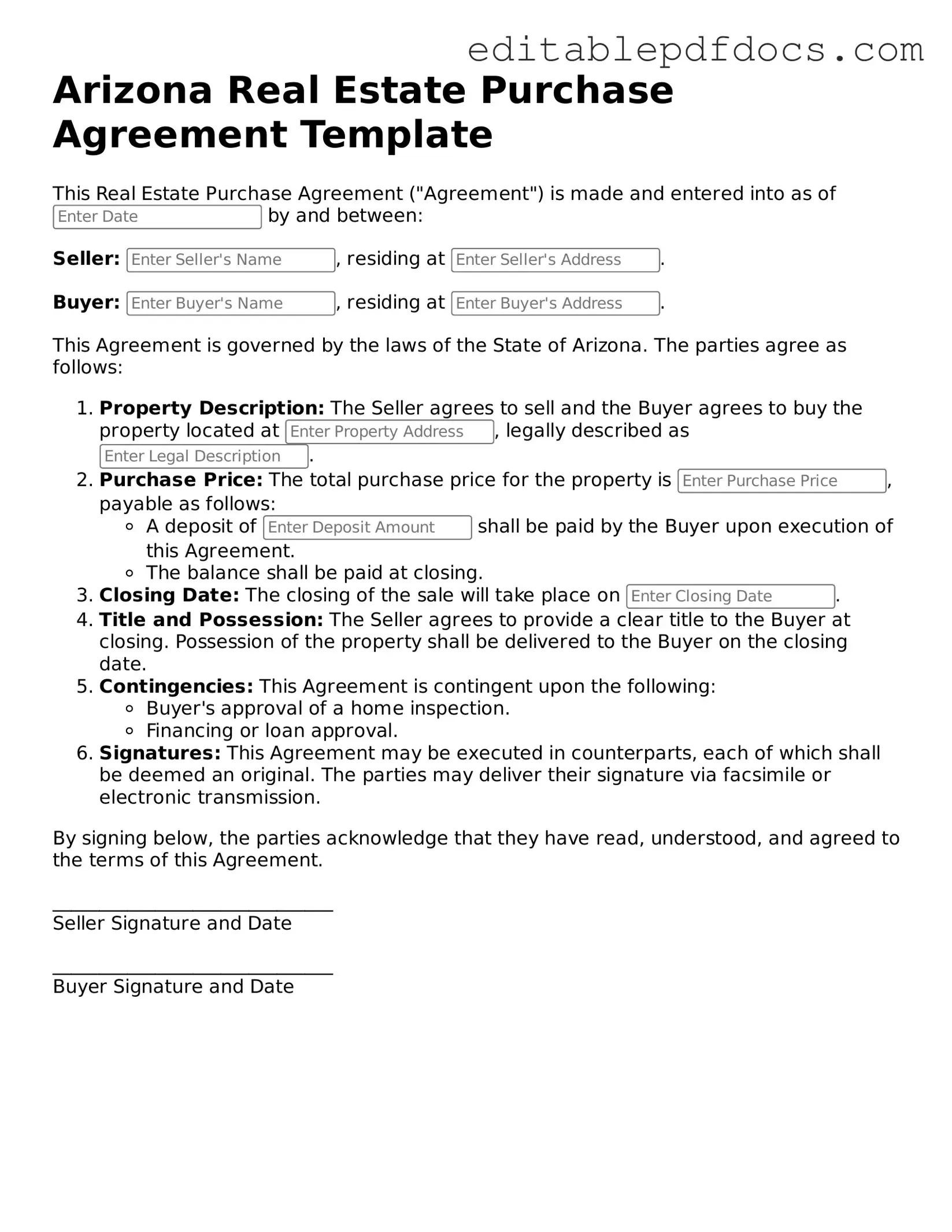Filling out the Arizona Real Estate Purchase Agreement can be a straightforward process, but many people make common mistakes that can lead to complications later. One frequent error is not providing complete information about the property. Buyers and sellers must ensure that the legal description of the property is accurate and detailed. Omitting essential details can create confusion and disputes down the line.
Another mistake involves neglecting to include all necessary contingencies. Contingencies protect buyers by allowing them to back out of the agreement under certain conditions, such as failing a home inspection or not securing financing. Without these clauses, buyers may find themselves locked into a deal that no longer suits their needs.
Many individuals also fail to specify the closing date. This date is crucial as it sets expectations for both parties. If the closing date is left blank or vague, it can lead to misunderstandings and delays in the transaction process.
Misunderstanding the earnest money deposit is another common issue. Buyers often either understate or overstate the amount they are willing to offer as earnest money. This deposit shows good faith and commitment to the purchase. If the amount is too low, sellers may question the buyer's seriousness.
Some people overlook the importance of reviewing the financing terms. Buyers should clearly state how they plan to finance the purchase, whether through a mortgage, cash, or another method. Failing to articulate this can create problems during the closing process.
Additionally, buyers and sellers sometimes forget to include their contact information. Clear communication is vital throughout the transaction. Without proper contact details, parties may struggle to reach each other, leading to unnecessary delays.
Another common mistake is not understanding the implications of the "as-is" clause. If a buyer agrees to purchase a property "as-is," they may be waiving their right to request repairs or negotiate based on the property’s condition. This can lead to unexpected costs after the sale.
People also frequently misinterpret the role of agents in the transaction. Buyers and sellers should clarify whether they are working with a real estate agent and understand the agent’s responsibilities. Miscommunication about representation can lead to conflicts of interest.
Finally, many individuals fail to read the entire agreement before signing. Skimming through the document can lead to overlooking critical terms and conditions. Taking the time to review the agreement thoroughly can prevent costly mistakes and misunderstandings.
